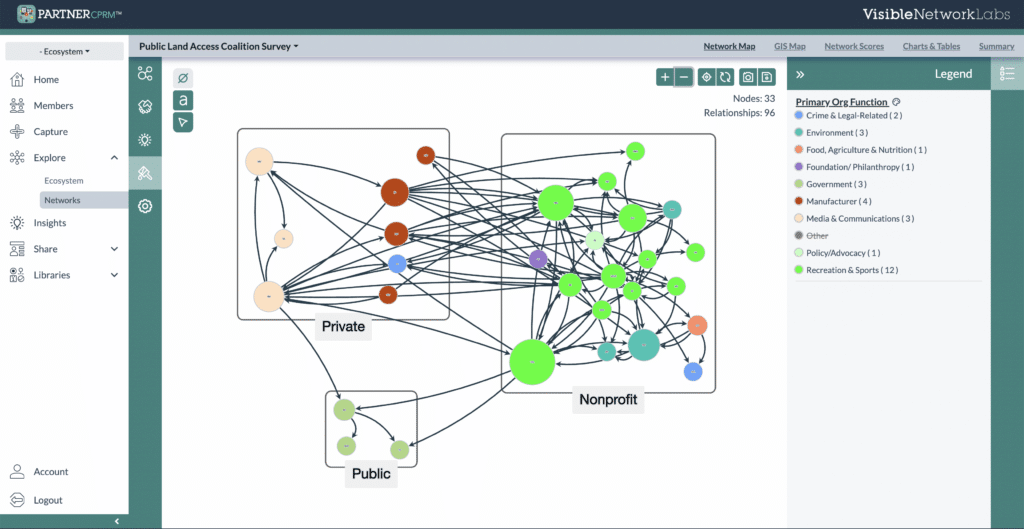Last week, I opened a newsletter that hit me with a concept that immediately clicked—and not just because I’ve worked in SaaS. The article, written by Isaac Peiris, dives into a core idea from product strategy called Time to Value (TTV)—the amount of time it takes for a user to experience the core benefit of your product. The shorter the TTV, the more likely that user is to stick around.
While product strategy and network leadership may seem like different worlds, they share a core challenge: proving value quickly to keep people engaged.
Simple, right? But the kicker was how Isaac applied that same idea to content creation—what he calls Time to Resonance (TTR)—and how it determines whether or not someone feels a message is “for them” in the critical few seconds after encountering it.
And it struck me: this applies just as much to community partnerships and network building as it does to products or content. In fact, I’d argue that reducing TTV and TTR is one of the most underused strategies in network leadership today.
Why Network Leaders Should Care About "Time to Value" (TTV)
When you’re working to build collaborative partnerships—whether you’re convening a coalition, launching a multi-sector initiative, or onboarding a community partner—your “network experience” is the product.
If a new partner has to spend too much time or effort figuring out who you are, what you’re offering, or how they benefit, you’re losing momentum. And possibly the relationship.
"If a new partner has to spend too much time or effort figuring out who you are, what you're offering, or how they benefit, you're losing momentum. And possibly the relationship."
Just like with SaaS platforms, if the value isn’t clear and immediate, engagement drops. The longer your Time to Value, the higher the drop-off rate, the shallower the connection, and the more energy you’ll spend chasing re-engagement.
That’s why I believe quick wins aren’t just helpful—they’re strategic.

Get our monthly newsletter with resources for cross-sector collaboration, VNL recommended reading, and upcoming opportunities for engaged in the “network way of working.”
Reducing TTV in Your Network: 5 Key Lessons from Product Strategy
If you’re trying to strengthen your partnerships, reduce drop-off, and build deeper engagement in your network, here’s how to start applying a “Time to Value” mindset:
1. Make Your Value Obvious—Fast

Don’t assume people will “figure out” why your initiative matters. Make the benefit to them crystal clear in your first call, onboarding, or meeting (ideally, even sooner than that, like in your first email or other outreach).
Not sure what that actually looks like? These are three initial ideas to get started with:
- Include a “what’s in it for you” section in every outreach or onboarding material that highlights immediate, tangible benefits.
- Use simple language to articulate the purpose of your network in terms of outcomes that matter to partners (e.g. visibility, funding alignment, shared resources).
- Show a quick demo or snapshot of what they’ll receive—like a preview of a PARTNER network map or member profile mockup—so the value is visual and immediate.
2. Be Specific About Who You Serve

Trying to appeal to everyone weakens your resonance. Don’t be afraid to name the type of partners you’re trying to work with, and even those you’re not.
Follow these three best practices to generate resonance more quickly.
- Clearly define your ideal partner profiles and include them on your website, one-pagers, and funding proposals.
- Create personas or partner categories (e.g., community-based orgs, funders, system leaders) and tailor messaging accordingly.
- Let potential partners self-select out if the network isn’t a good fit—being honest here saves time and strengthens alignment.
3. Do Your Homework First

Take time to get to know potential partners and new network members before you reach out and connect. Show people you’ve done the research on their role, organization, and goals. This reduces the cognitive load for them to figure out how they fit in.
Check out these three ideas for researching potential partners:
- Scan their website, social channels, and recent projects before outreach, and reference them in your message.
- Tailor meeting agendas to their work—highlight shared priorities or recent overlaps.
- Use database tools like PARTNER CPRM to check an organization’s role and place in the broader ecosystem to inform your outreach and approach (like mutual contacts or partners)
4. Build in Quick Wins

Design early interactions to give partners something meaningful right away—a connection, a resource, a useful insight, even a data point.
Here are three ideas on how to accomplish this in practice.
- Provide each new partner with a member profile “engagement snapshot” or a summary of their strengths and weaknesses in the network using your CPRM data.
- Facilitate one useful introduction or “network match” in their first few weeks.
- Offer a free, low-lift workshop or resource (like a community asset map or power analysis) they can use immediately to improve their work.
5. Signal Intention Upfront

Network strategy is about intentionality. Let partners know what kind of collaboration you’re building, what your values are, and what kind of contributions you’re seeking.
There are a lot of ways to do this, depending on your community context and culture:
- Include a one-pager or slide early in onboarding that outlines your values, purpose, theory of change, and/or logic model.
- Be explicit in asking for certain types of community engagement (e.g. co-designing a survey, serving as a hub org, joining a leadership team).
- Use network agreement templates or partner commitment forms to make expectations mutual, clear, and empowering.
The Bottom Line: Creating Value Quickly
Whether you’re launching a new collaborative, refreshing your community engagement plan, or onboarding new stakeholders into your network—speed to value matters.
The quicker your partners can see themselves in your network and feel like it’s built for them, the deeper and more sustained the engagement will be.
So next time you reach out to a potential partner or plan an onboarding session, ask yourself:
How can I reduce my network's time to value and resonance?
Because in networks, just like in SaaS or content, trying to resonate with everyone means connecting deeply with no one. And that connection—the fast, relevant, mutual recognition of value—is the foundation of everything we build.

Put It Into Practice with PARTNER CPRM
If you’re ready to start reducing Time to Value in your networks, PARTNER CPRM is built to help you do exactly that. Our platform is designed for network leaders, coalition coordinators, and community partnership teams who want to act with intention, engage strategically, and demonstrate impact early and often.
With features like network maps, trust and value scores, member profiles, GIS maps with data overlays, and automated key player analysis, you can quickly show partners where they fit, how they’re connected, and why their role matters—making the value of your network visible from day one.






